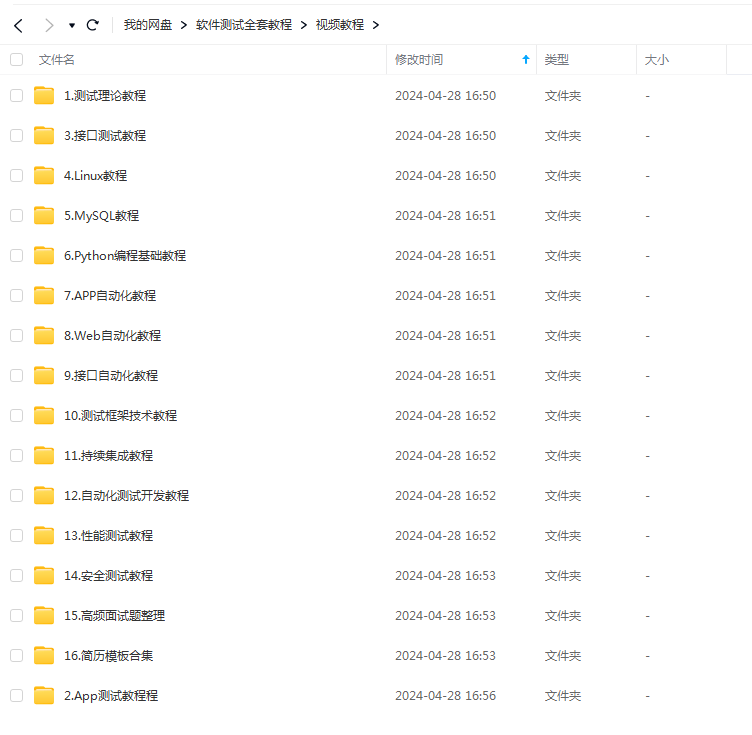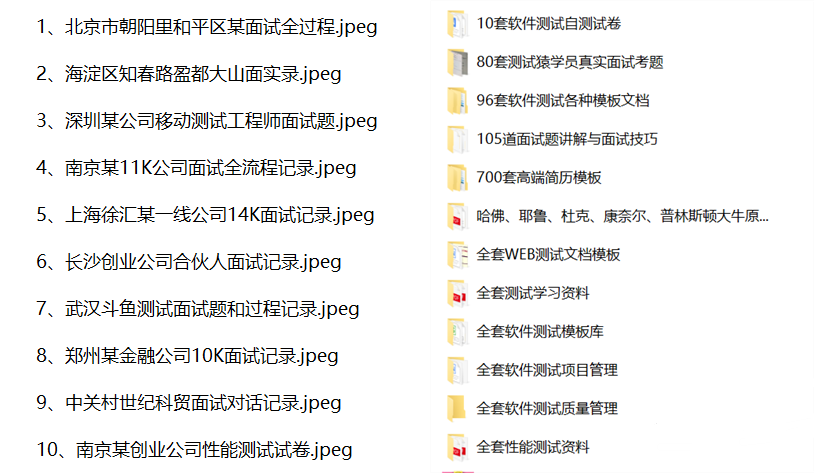亲爱的开发者们,👋 在快速迭代的软件开发周期中,接口自动化测试扮演着至关重要的角色。今天,我们将分享10个实用的Python小脚本,它们能够显著提升你编写接口自动化测试的效率。无论是初学者还是资深工程师,这些技巧都将帮助你更高效、更优雅地完成工作。🌟
![]()
1. 自动化生成测试用例模板
import stringimport randomdef generate_test_case_template(test_name, endpoint):template = f"""def test_{test_name}(self):url = '{endpoint}'# Your test logic herepass"""return templateclass TestCases:# Generate and print templates for all your endpointsfor i in range(1, 11):print(generate_test_case_template(f"case_{i}", f"/api/v1/endpoint_{i}"))
2. 从CSV文件读取测试数据
import csvdef read_test_data_from_csv(file_path):test_data = []with open(file_path, mode='r') as file:reader = csv.DictReader(file)for row in reader:test_data.append(row)return test_datadata = read_test_data_from_csv('test_data.csv')for row in data:print(row)
3. 动态构建请求头
def build_headers(token=None, content_type="application/json"):headers = {"Content-Type": content_type}if token:headers["Authorization"] = f"Bearer {token}"return headersheaders = build_headers(token="your-token-here")print(headers)
4. 发送带重试机制的HTTP请求
import requestsfrom tenacity import retry, stop_after_attempt, wait_fixed@retry(stop=stop_after_attempt(3), wait=wait_fixed(2))def send_request(url, method="GET", params=None, headers=None):response = requests.request(method, url, params=params, headers=headers)response.raise_for_status()return response.json()data = send_request("https://api.example.com/data", headers={"Authorization": "Bearer your-token"})print(data)
5. JSON响应验证
import jsondef validate_response(response, expected_schema):try:assert isinstance(response, dict)for key, value in expected_schema.items():assert key in response, f"Missing key: {key}"if isinstance(value, dict):validate_response(response[key], value)else:assert isinstance(response[key], type(value)), f"Incorrect type for key: {key}"except AssertionError as e:print(e)return Falsereturn Trueschema = {"name": str, "age": int}response = {"name": "John Doe", "age": 30}validate_response(response, schema)
6. 自动化文档注释
def auto_docstring(func):func.__doc__ = f"""{func.__name__}:- Description: This function tests the {func.__name__} endpoint.- Endpoint: /api/{func.__name__}"""return func@auto_docstringdef test_user_login(self):pass
7. 数据随机化
def random_email():return ''.join(random.choice(string.ascii_lowercase) for _ in range(10)) + "@example.com"print(random_email())
8. 配置管理
import yamldef load_config(file_path):with open(file_path, 'r') as file:return yaml.safe_load(file)config = load_config('config.yml')print(config)
9. 异常处理和日志记录
import logginglogging.basicConfig(level=logging.INFO)def safe_request(url):try:response = requests.get(url)response.raise_for_status()return response.json()except requests.RequestException as e:logging.error(f"Error making request to {url}: {e}")return Nonedata = safe_request("https://api.example.com/data")if data:print(data)else:print("Request failed.")
10. 测试报告生成
import unittestfrom HTMLTestRunner import HTMLTestRunnerclass MyTestCase(unittest.TestCase):def test_something(self):self.assertEqual(True, True)if __name__ == '__main__':suite = unittest.TestLoader().loadTestsFromTestCase(MyTestCase)runner = HTMLTestRunner(output='reports', verbosity=2)runner.run(suite)
![]()
总结
这些小脚本覆盖了从数据准备、请求发送到结果验证和报告生成的整个接口自动化测试流程。它们不仅能够帮助你提高测试覆盖率,还能减少重复劳动,让你有更多时间专注于更有价值的工作。🚀
记得在实际应用中根据项目需求调整和扩展这些脚本,以达到最佳效果。持续学习和实践,你的自动化测试技能将不断提升,最终实现更高质量的软件交付。🌟
注意:以上示例代码仅供参考,实际应用时请确保代码的安全性和兼容性,特别是在处理敏感数据和生产环境时。此外,部分示例依赖于外部库(如tenacity, HTMLTestRunner),需要先安装这些库才能运行。
如果你在实践中遇到任何问题,或者有更高效的方法,欢迎在评论区分享交流。我们共同进步,让代码生活更加精彩!👩💻👨💻
最后感谢每一个认真阅读我文章的人,看着粉丝一路的上涨和关注,礼尚往来总是要有的,虽然不是什么很值钱的东西,如果你用得到的话可以直接拿走!

软件测试面试文档
我们学习必然是为了找到高薪的工作,下面这些面试题是来自阿里、腾讯、字节等一线互联网大厂最新的面试资料,并且有字节大佬给出了权威的解答,刷完这一套面试资料相信大家都能找到满意的工作。



)

)














:系统定义和布局)
